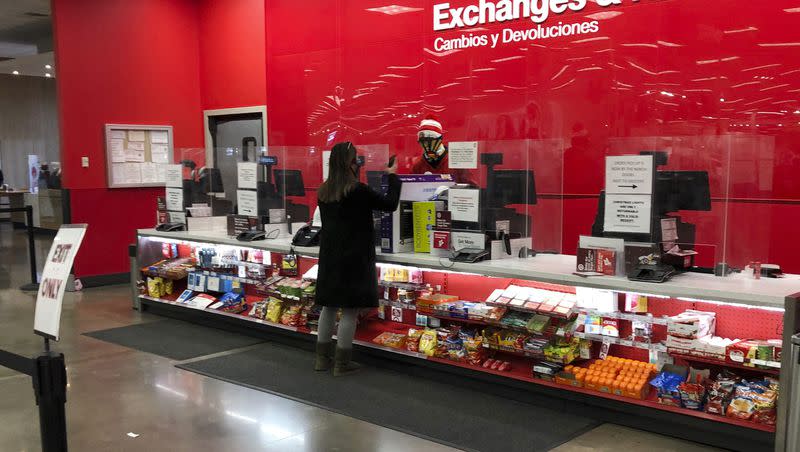Returning your Christmas gifts this year may cost you

As the holiday season winds down, retail returns are set to skyrocket — but this year customers may have to start footing the bill.
According to CBS News, various retailers have begun to charge for returns, including REI, American Eagle, Abercrombie & Fitch, Urban Outfitters, Zara and J. Crew. While you can still drop off your Amazon returns for free at Whole Foods and Kohl’s, the company has begun to charge $1 for returns brought to UPS.
In 2022 alone, consumers returned $816 billion worth of merchandise, making up 16.5% of retail sales for that year, per the National Retail Federation.
Though this year’s economic outlook has remained negative for many consumers, holiday spending still rose about 3.1%, according to MarketWatch, and the rate of returns this year will likely be comparable to that of 2022.
CNN reports that 81% of retail merchants have started charging fees for returns. What’s behind this trend?
Why is returning products expensive?
Before the rise of online shopping, customers simply took their unwanted items back to the place of purchase. Now, the return process is more complicated — and costly — with the necessity of shipping fees and middlemen.
When a company makes an online sale, it typically foots at least part of the cost of shipping the product to the customer, but if the customer decides to send it back, the company also covers the return shipment fee.
Processing returns can cost up to $20 per item in addition to the amount it cost to ship it initially, Forbes reported. Companies have found that these costs sometimes outweigh the actual value of the item, so processing a return would result in a loss on many occasions.
Besides the shipping fee, companies have to spend resources on processing returns, which entails sorting shipments and conducting quality checks on items to determine resell potential and what will be more worthwhile in a landfill.
According to The Wall Street Journal, warehouse workers responsible for processing retail returns must check items for damage and odor, lint roll them and check pockets for anything a customer might have accidentally left, which happens more often than one might expect.
“The number-one thing returned unintentionally with pants are undergarments,” Thomas Borders, general manager of supply-chain solutions for Inmar, told The Wall Street Journal.
The recent surge in returns likely comes as a result of pandemic shopping patterns, which saw people making larger orders with the intent of trying out multiple items and only keeping a fraction of them, mimicking the in-store shopping experience.
While in-person shopping restrictions have long been lifted, these patterns have taken root in consumer practices and been boosted by attractive online deals that render a digital purchase more sensible than a trip to the mall.
Now, companies and their shipping warehouses are taking the hit.
These circumstances have led some companies to refuse return shipments. Instead, they issue refunds to customers and allow them to keep the products.
How do product returns affect small businesses?
Corporations like Macy’s and Amazon may be making headlines for changes in their return policies, but it’s small businesses that carry the largest burden when it comes to accepting returns.
For smaller staffs, the time it takes to physically process returns can overwhelm small businesses, a Capital on Tap study found.
Due to sheer product volume, corporations also tend to pay less for shipping than do small businesses. When faced with large numbers of returns, small businesses shoulder higher costs proportionate to those of big companies.
Alex Milovic, an associate professor of practice at Marquette University, told WTMJ-TV, “If products are being stolen then I have to put sort of a theft tax on it. The same thing for a return tax because I have to assume that a certain number of all products are going to be returned.”
Milovic advises consumers be mindful in their shopping by avoiding excess purchases and choosing retailers wisely.
Does returning products harm the environment?
After corporations conclude that a product is worth more to them in the trash than back on their digital shelves, these items are relegated to liquidation warehouses and landfills, per CNN.
Combined with unimaginably high production, this trend helps explain why the fashion industry is the second most-polluting industry. Apparel is a large portion of e-commerce transactions and, as of 2023, makes up the bulk of online returns, per Statista.
“In a single year, online returns can create 5 billion tons of landfill waste and produce the same amount of carbon dioxide that 3 million cars make in a year,” Forbes reported.
According to Green America, Americans produce 16 million tons of textile waste every year, most of which ends up in a landfill. Smaller portions are shipped overseas, recycled and incinerated.
As companies alter their return policies in ways that aggravate consumers, one potential consequence may be a minute, but positive, impact on e-commerce’s contributions to pollution and sustainability.
Related

